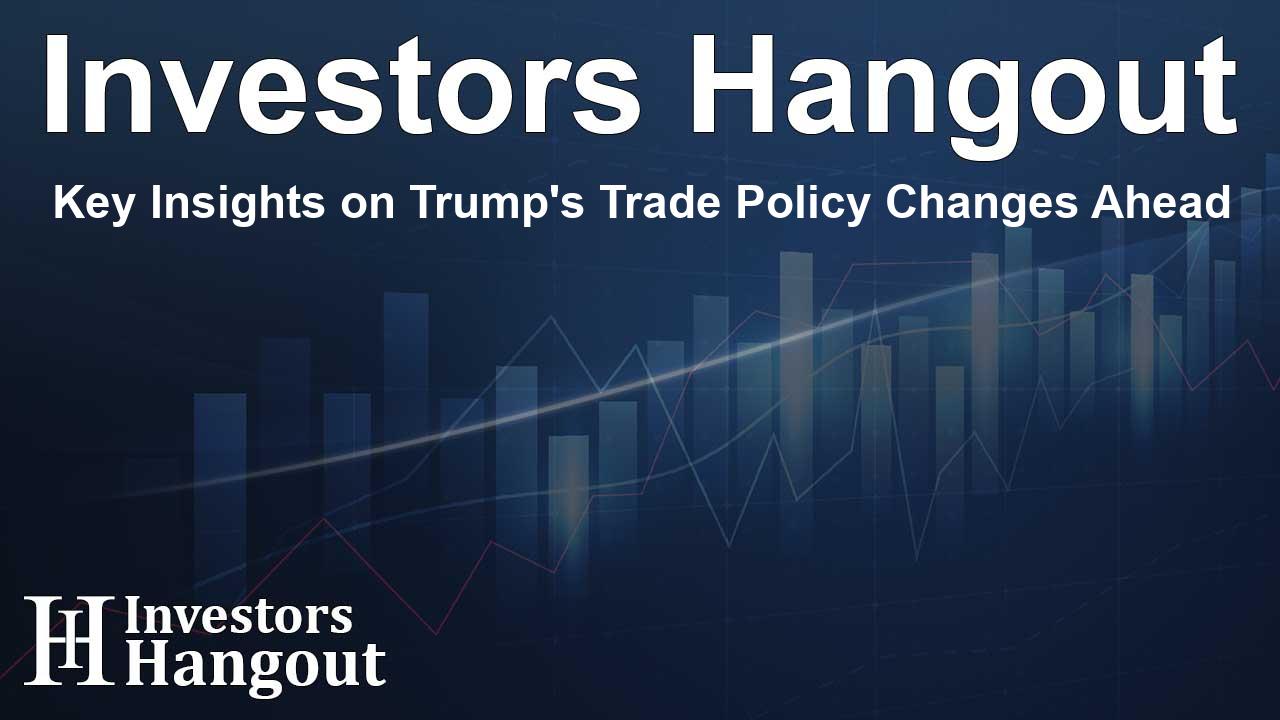Key Insights on Trump's Trade Policy Changes Ahead

Trump's Trade Policy: Significant Changes Ahead
Amidst heated trade discussions, the landscape of U.S. tariffs has become a pressing issue under the Trump administration. While many anticipated immediate trade barriers when Donald Trump assumed office, those fears were somewhat quelled as tariffs were not rolled out on the first day. Instead, an intriguing approach emerged with the presentation of the 'America First Trade Policy' plan, signifying a new direction in U.S. trade strategy.
A Pivotal Date: April 1
Analysts from Barclays have highlighted April 1 as a critical date for market observers and investors alike. This date is pivotal because it coincides with a deadline outlined in the presidential memorandum for federal agencies to review and report on trade-related issues. Such reports may prove instrumental in shaping future tariff announcements that could significantly impact various sectors.
Anticipating New Tariff Proposals
Following the issuance of the reports due on April 1, there is a belief that new tariff proposals or adjustments to existing tariffs could be announced shortly thereafter, with the changes set to be implemented within 30 to 60 days. This potential timeline introduces a layer of urgency for businesses and investors to monitor closely how trade relationships, especially those with China, Mexico, and Canada, may evolve.
Potential Targets for Tariffs
The presidential memorandum suggests a wide range of tariffs might be considered, with particular focus on nations like China, Mexico, and Canada. Specifically, Trump has threatened sweeping tariffs of up to 25% on imports from Mexico and Canada, alongside a dramatic 100% tariff on Chinese goods linked to TikTok concerns. Analysts argue, however, that the planned timeline as per the memorandum carries greater significance and should not be overlooked as mere impulsive threats.
Understanding Trade Deficits
Further insights from the memorandum indicate a thorough examination of the reasons behind the U.S.’s persistent trade deficits. This review may lead to recommended actions, possibly including broad supplemental tariffs and other measures targeting sectors and nations that currently contribute to these deficits. Those countries facing the largest imbalances are likely to be at greater risk of facing additional tariffs, underlining the importance of this review process.
Strategic Appointments in the Trade Sector
Another relevant aspect of the timeline leading up to April 1 involves the appointment of key positions within the Trump administration, including that of Commerce Secretary and U.S. Trade Representative. Securing these appointments could play a crucial role in dictating the direction of tariff adjustments and trade strategies moving forward. Analysts from Barclays emphasize that these roles are vital as the administration looks to affect meaningful changes in tariff policies.
Future Outlook
As we approach the significant date of April 1, the business and investment communities are encouraged to stay alert and prepared for what may come. The review and subsequent reports could herald a new chapter in U.S. trade policy, potentially reshaping the economic landscape and influence relationships across the globe.
Frequently Asked Questions
Why is April 1 significant for U.S. trade policy?
April 1 is crucial as it's the deadline for federal agencies to submit reports that could lead to new or adjusted tariffs.
What types of tariffs are being considered?
The memorandum suggests possible universal tariffs and those specifically targeting countries like China, Mexico, and Canada.
How soon could changes to tariffs occur after April 1?
Changes could be announced shortly after April 1, taking effect within 30 to 60 days.
What are the potential impacts of new tariffs?
New tariffs could significantly impact trade relationships, particularly affecting sectors with large trade deficits with the U.S.
What roles are important for trade policy adjustments?
Key positions like Commerce Secretary and U.S. Trade Representative are essential for implementing changes in tariff policies.
About The Author
Contact Thomas Cooper privately here. Or send an email with ATTN: Thomas Cooper as the subject to contact@investorshangout.com.
About Investors Hangout
Investors Hangout is a leading online stock forum for financial discussion and learning, offering a wide range of free tools and resources. It draws in traders of all levels, who exchange market knowledge, investigate trading tactics, and keep an eye on industry developments in real time. Featuring financial articles, stock message boards, quotes, charts, company profiles, and live news updates. Through cooperative learning and a wealth of informational resources, it helps users from novices creating their first portfolios to experts honing their techniques. Join Investors Hangout today: https://investorshangout.com/
The content of this article is based on factual, publicly available information and does not represent legal, financial, or investment advice. Investors Hangout does not offer financial advice, and the author is not a licensed financial advisor. Consult a qualified advisor before making any financial or investment decisions based on this article. This article should not be considered advice to purchase, sell, or hold any securities or other investments. If any of the material provided here is inaccurate, please contact us for corrections.
